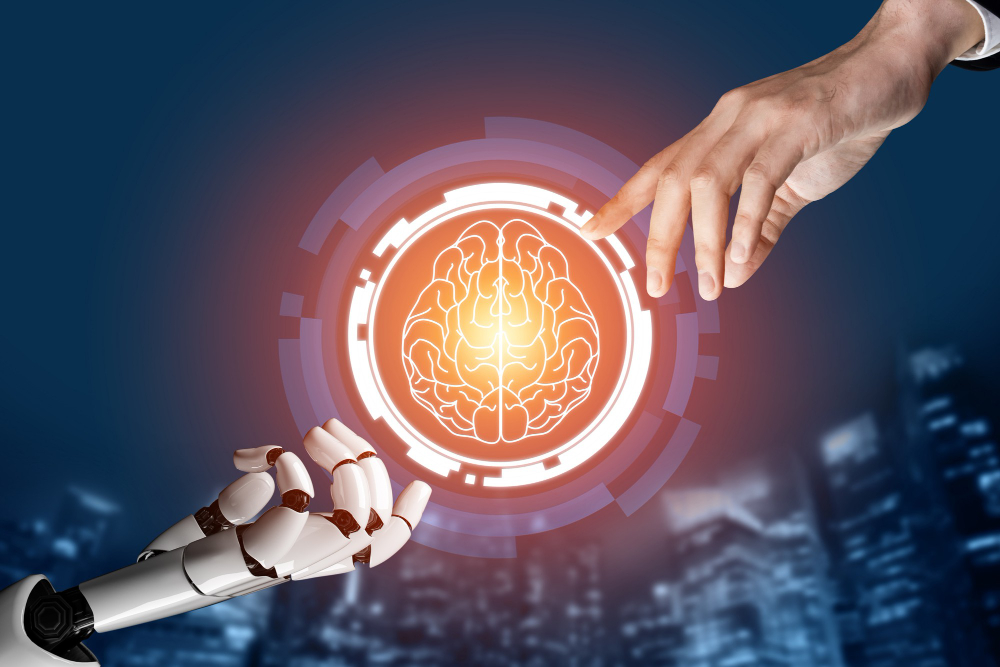Machine learning doesn’t have its own languages, but certain programming languages are favored due to their efficiency, libraries, and ease of use in ML contexts. These languages, each with unique strengths and capabilities, serve as essential tools for professionals, researchers, and enthusiasts.
Popular Programming Languages Used in Machine Learning
Here are some of the most popular programming languages used in machine learning:
Python:
Python is generally the most popular language for machine learning and data science. The vast ecosystem of libraries and frameworks like TensorFlow, PyTorch, Scikit-learn, and Keras makes it a go-to choice for professionals and researchers in the field.
R:
R is particularly strong in statistical analysis, which makes it another favorite among data scientists. Its robust package ecosystem and built-in functionalities for statistics make it very suitable for developing machine learning models, particularly in academic and research settings.
Java:
With its performance capabilities, scalability, and robustness, Java is used in enterprise environments, especially when performance and scalability are key concerns. Libraries such as WEKA, Deeplearning4j, and MOA support machine learning in Java.
C++:
When performance is critical, C++ is a preferred choice. It is used for machine learning, primarily in scenarios where the execution speed is critical, such as in high-frequency trading or when dealing with enormous data sets where overhead can be a bottleneck.
Julia:
Though it’s a newer language, Julia was designed to address the speed limitations of Python and R. It is gaining popularity in machine learning due to its performance efficiency, especially in handling complex numerical and technical computing.
Scala:
Scala, used primarily with Apache Spark’s MLlib library, is prevalent in the field of Big Data when performance and data processing capabilities are essential.
JavaScript:
With the advent of TensorFlow.js and other libraries, JavaScript is gaining ground, especially for deploying machine learning models in web browsers or server-side with Node.js.
Current Trends in the Development of Machine Learning Languages
We are witnessing several impactful trends shaping the development, utilization, and accessibility of programming languages. These trends reflect the growing needs of businesses, researchers, and developers for more efficient, versatile, and user-friendly tools. Here are some of the current trends influencing the landscape of machine-learning languages:
Python’s Dominance
Python continues to strengthen its position as the leading language in machine learning and data science due to its simplicity, readability, and rich ecosystem of libraries and frameworks (like TensorFlow, PyTorch, and Scikit-learn). Its community continuously grows, driving innovations and improvements in the ML field.
Cross-platform Frameworks and Tools
There is a growing trend towards developing frameworks and tools that support multiple languages or can be used across platforms. For instance, TensorFlow and PyTorch offer APIs for different languages besides Python, making machine learning more accessible to developers who specialize in other languages.
Use of Scripting Languages in ML
The adoption of scripting languages (like JavaScript for ML in web browsers with TensorFlow.js) is on the rise. These developments make deploying lightweight models directly in browsers or on client devices easier, providing low-latency applications and privacy advantages.
Julia’s Rise
The Julia programming language is gaining traction for high-performance scientific computing and machine learning. Its ability to handle complex numerical computations efficiently and its speed, comparable to that of C++, make it an attractive choice, especially in academic and research settings working on sophisticated models.
Integration with Big Data Platforms
Languages that integrate well with big data processing platforms (like Scala with Apache Spark) are becoming more prominent. As machine learning increasingly handles massive datasets, the seamless integration between data processing and machine learning frameworks becomes essential.
Automated Machine Learning (AutoML)
There is a growing interest in automation tools that simplify the machine learning process, making it more accessible to non-experts. These tools, often developed with Python, are designed to automate the selection of algorithms, hyperparameter tuning, iterative modeling, and model assessment.
Edge Computing in ML
With the growth of IoT and the need for low-latency applications, there is a trend towards using languages and frameworks that support machine learning on edge devices. This trend requires languages that can work in constrained environments, driving interest in more efficient, compact coding.
Focus on Privacy and Security
Languages and frameworks that support federated learning and differential privacy are gaining attention. These methods allow models to learn from data without extracting or centralizing it, thereby preserving user privacy.
The Next Generation of Machine Learning Languages
Machine learning is advancing at a relentless pace. A forefront of new machine learning programming languages is emerging to fuel the next breakthroughs.
These languages aim to overcome limitations holding back today’s popular options like Python and R. They optimize for lightning-fast performance when handling vast datasets and complex models – two hallmarks of modern machine learning.
One notable entrant is Julia, a high-level, high-performance language for technical computing. It offers the performance of C with the dynamism and operability of Python, a feat achieved through Just-In-Time (JIT) compilation. The language is ideal for applications in engineering, big data, and machine learning and is set to make significant waves in the industry.
Another language gaining traction is Swift, traditionally known for iOS development but now emerging as a potential candidate for machine learning. With TensorFlow’s Swift for TensorFlow project, Swift is acknowledged for its strong type system, performance, and ability to define custom differentiable operators.
Advantages and Disadvantages of Different Machine Learning Languages
-
Python:
- Advantages: Immense library support, ease of learning, and extensive community support make it the first choice for beginners and researchers developing new algorithms.
- Disadvantages: Python can struggle with performance bottlenecks due to its interpreted nature and Global Interpreter Lock (GIL). It’s not always suitable for high-performance, low-latency systems.
-
R:
- Advantages: Best suited for statistical analysis and visualizing data. It is extensively used in academia and by statisticians for explorative data analysis.
- Disadvantages: R often falls short in speed and efficiency with large datasets and has a steeper learning curve for individuals accustomed to other mainstream programming languages.
-
Julia:
- Advantages: Combines the ease of Python and the computational efficiency of C. It’s excellent for high-performance computing and has a growing ecosystem.
- Disadvantages: The community and ecosystem, though rapidly growing, are still smaller compared to older, more established languages, leading to fewer readily available solutions or third-party libraries.
-
Swift:
- Advantages: Offers performance comparable to C++ and supports differentiable programming central to machine learning.
- Disadvantages: It’s relatively new in machine learning, and community and library support for machine learning is currently limited but growing.
Solving Real-World Problems with Machine Learning Languages:
Machine learning languages are at the forefront of solving a myriad of real-world problems, from healthcare to financial services, by making sense of vast and complex data.
Healthcare
Python and R are extensively used in predictive diagnostics, where machine learning models help anticipate diseases and disorders early by analyzing patient data, allowing for timely intervention.
Finance
Through languages like Python and R, machine learning has revolutionized fraud detection, risk management, and customer service through chatbots and personal finance advisors.
Transportation
Julia and Python are used in optimizing logistics, predicting vehicle maintenance and autonomous vehicles, and improving safety, efficiency, and sustainability in the transportation sector.
E-commerce and Marketing
Machine learning languages help in personalizing user experience by analyzing customer behavior, thereby improving sales, customer satisfaction, and retention rates.
Predictions for the Future
As we navigate the digital revolution, machine learning languages are not just tools of technology; they are shaping the contours of our future society and economy.
Continued Evolution of Machine Learning Languages:
Convergence of Technologies
Machine learning languages will likely evolve to support a convergence of technologies, particularly integrating with quantum computing, blockchain, and the Internet of Things (IoT). This would mean languages becoming more robust, supporting complex, secure, highly scalable solutions, and allowing seamless interaction between diverse systems.
Language Interoperability
Future Machine Learning languages could move towards greater interoperability. While languages like Python dominate the landscape, there is growing recognition of the benefits of multiple languages working in collaboration. We might see more ML frameworks offering cross-language support, enabling developers to leverage the unique strengths of each language.
Enhanced AutoML and AI-Driven Development
As we advance, the languages themselves might become more ‘intelligent’. With the rise of Automated Machine Learning (AutoML), we predict further sophistication in these systems, possibly proposing code improvements or new algorithms, which will make ML models more efficient, accurate, and easier to build, even for non-experts.
Energy-Efficient Computing
With growing digitalization, energy consumption by data centers is a concern. Future Machine learning languages might evolve to require less computational power, with coding practices that enable more energy-efficient operation of massive data centers, leading to a greener global digital infrastructure.
Ethical and Transparent AI
As society becomes more conscious of ethical implications, Machine learning languages will likely develop features emphasizing transparency, security, and fairness. Tools for explainable AI, privacy protection (like differential privacy), and bias mitigation could become standard components of ML libraries.
Impact on Society and Economy:
Revolutionizing Employment
Machine learning development will continue to automate routine tasks, resulting in significant shifts in the job market. While some jobs may become obsolete, many new roles will emerge, particularly those requiring ML, data analysis, and AI ethics expertise. Educational systems will likely adapt to this change, emphasizing continuous learning and tech literacy.
Healthcare Advancements
ML will play a critical role in predictive medicine, personalized treatment, drug discovery, and managing healthcare systems. This implies better disease management and substantial economic implications, potentially saving billions through efficient resource allocation and preventive healthcare.
Sustainable Development
Through smart cities, intelligent energy management, and environmental monitoring, ML will be instrumental in combating climate change and promoting sustainability. It will help economies transition to renewable energy, optimize resource use, and innovate agricultural practices, contributing to food security.
Financial Systems
ML will further integrate into financial services, improving fraud detection, customizing insurance, optimizing investment strategies, and managing risks. This could enhance economic stability, even though regulatory bodies will need to evolve policies to govern these advanced systems.
Social Welfare and Governance
Governments will increasingly adopt ML to improve services, from transportation and public safety to social welfare programs, ensuring more effective governance. Additionally, ML could assist in managing social issues and analyzing societal patterns to help formulate policies addressing inequality, education gaps, and other complex problems.
As these languages become more advanced, user-friendly, and ethically aligned, we will witness transformative changes, redefining economies and everyday life.
Conclusion
Machine learning is transforming society through code. But it’s not just a technical journey – it’s a human one.
As these programming languages enable increasingly complex AI systems, we must guide the progress conscientiously. The global community should steer innovations to uplift society.
If we spectate passively, we cede control of how this technology impacts humanity. We must participate actively in shaping a future aligned with moral values.
There are challenges ahead, like job losses, inequality, and environmental impacts. But with vigilance, we can curate positive change. Wise regulation combined with ethical engineering can direct Machine Learning tools toward broad benefit.
The languages may be digital, but the implications are deeply human. Let’s confront the road ahead with caution yet optimism. And pave the way for machine learning to enable a society of innovation, equality, and harmony with our planet.


